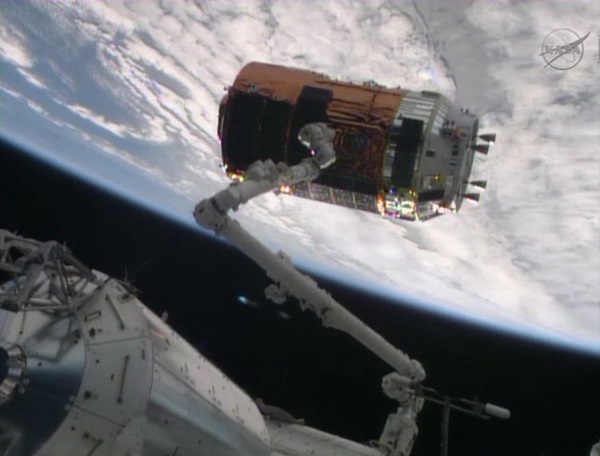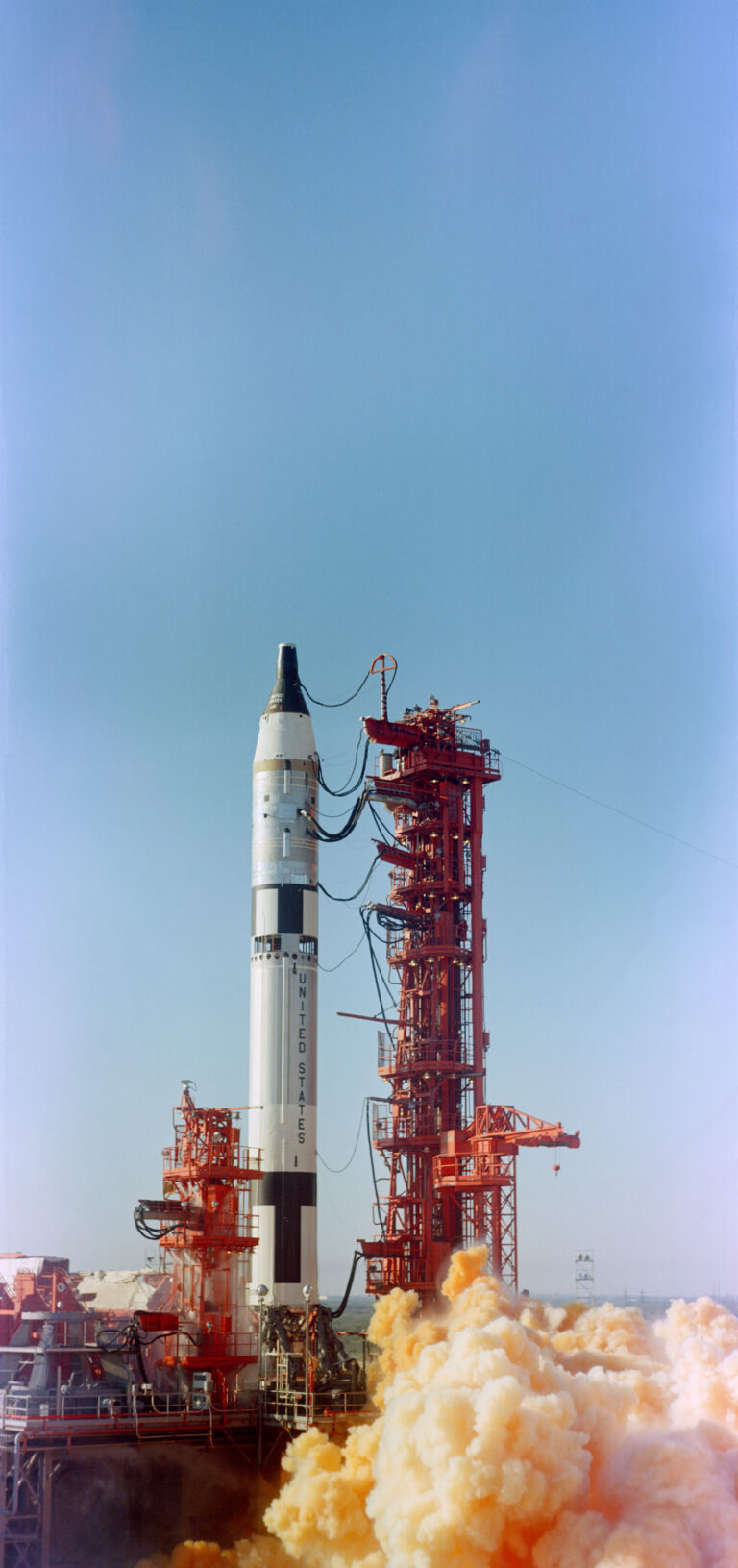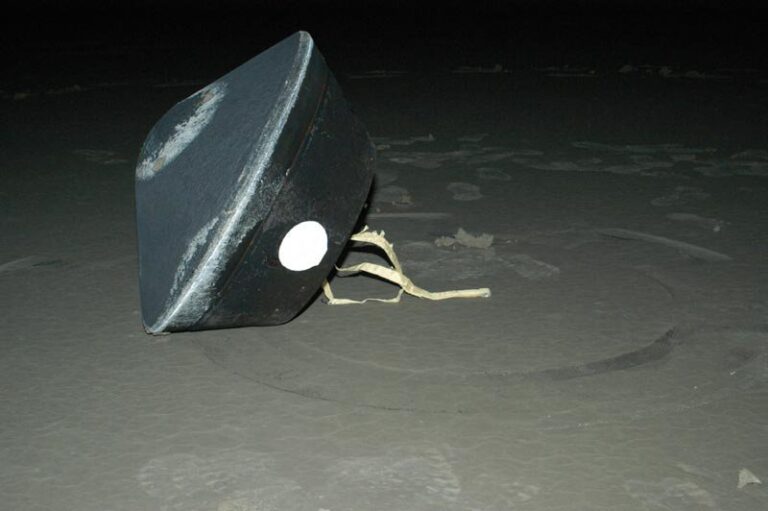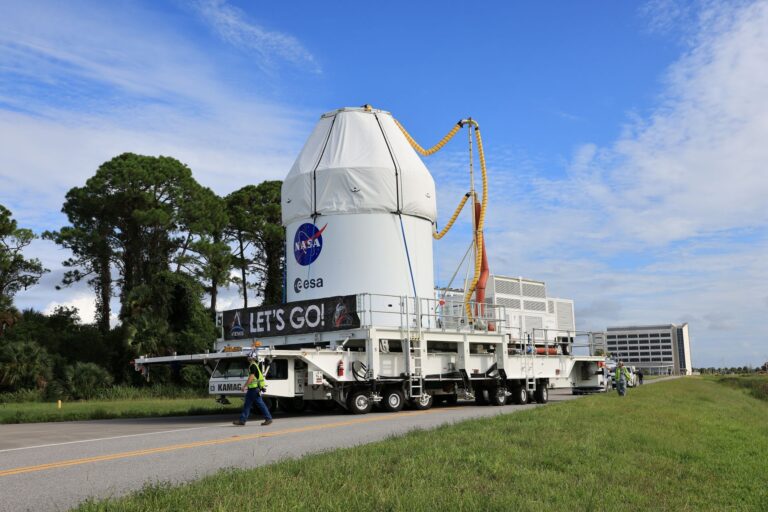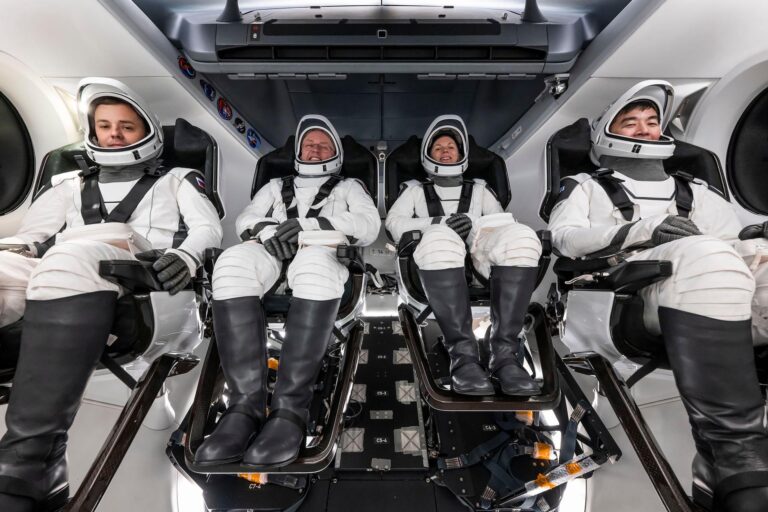Working at the controls of the robotics workstation inside the station’s cupola while Flight Engineer Chris Cassidy provided assistance and communicated with the teams on the ground, Nyberg maneuvered Canadarm2 to grapple the HTV-4 cargo ship as it flew within about 30 feet (9 meters) of the complex. Flight Engineer Luca Parmitano of the European Space Agency joined the two NASA astronauts in the cupola to monitor the systems of the Japanese space freighter during the approach.
At the time of capture, the station was south of South Africa and orbiting at an altitude of 260 miles (418 kilometers).
With HTV-4 securely in the grasp of Canadarm2, the robotics team at the Johnson Space Center’s Mission Control Center in Houston will remotely command the arm to guide HTV-4 to a ready-to-latch position on the Earth-facing port of the Harmony node. Nyberg and Cassidy will then use a laptop computer to conduct the initial bolting and first stage capture of Harmony’s Active Common Berthing Mechanism (ACBM) with HTV-4’s Passive Common Berthing Mechanism (PCBM). Once that is done, the ground team will complete the bolting process through second stage capture.
Also known as Kounotori, or “white stork,” because it is emblematic of an important delivery, HTV-4 is loaded with about 3.6 tons of equipment, supplies, and experiments within its pressurized and unpressurized cargo sections. HTV-4 launched from the Tanegashima Space Center in southern Japan on August 3 at 3:48 p.m. (August 4 at 4:48 a.m. Japan time).
After equalizing pressures between the cargo craft and the station, the crew is scheduled to open the hatches August 10 and begin the process of removing the supplies from the Kounotori’s pressurized logistics carrier.
Among the items within Kounotori’s pressurized section are test samples for research experiments inside the Kibo laboratory, a new freezer capable of preserving materials at temperatures below –90° Fahrenheit (–68° Celsius), four small CubeSat satellites to be deployed from Kibo’s airlock, as well as food, water, and other supplies for the station’s crew.
The HTV-4’s unpressurized section is delivering two orbital replacement units (ORUs) – a spare Main Bus Switching Unit (MBSU) and a spare Utility Transfer Assembly (UTA) – to keep the space station’s electrical system operating smoothly. The UTA maintains electrical continuity through the Solar Alpha Rotary Joint, passing electrical power generated by the complex’s huge solar arrays to station elements and payloads, while the MBSU provides switching capabilities for the various power channels and sources. ORUs are modular station components designed to be replaced periodically.
Also inside HTV’s unpressurized cargo hold is the Space Test Program – Houston 4 (STP-H4) payload, which is a suite of seven experiments for investigating space communications, Earth monitoring, and materials science.
The exposed pallet to which all the unpressurized cargo is mounted will be removed from Kounotori by Canadarm2, handed off to the Japanese Experiment Module robotic arm, and attached to a platform on the Kibo module’s Exposed Facility over the weekend.
In early September, the cargo vehicle will be filled with trash, detached from the station, and sent to burn up in Earth’s atmosphere.

